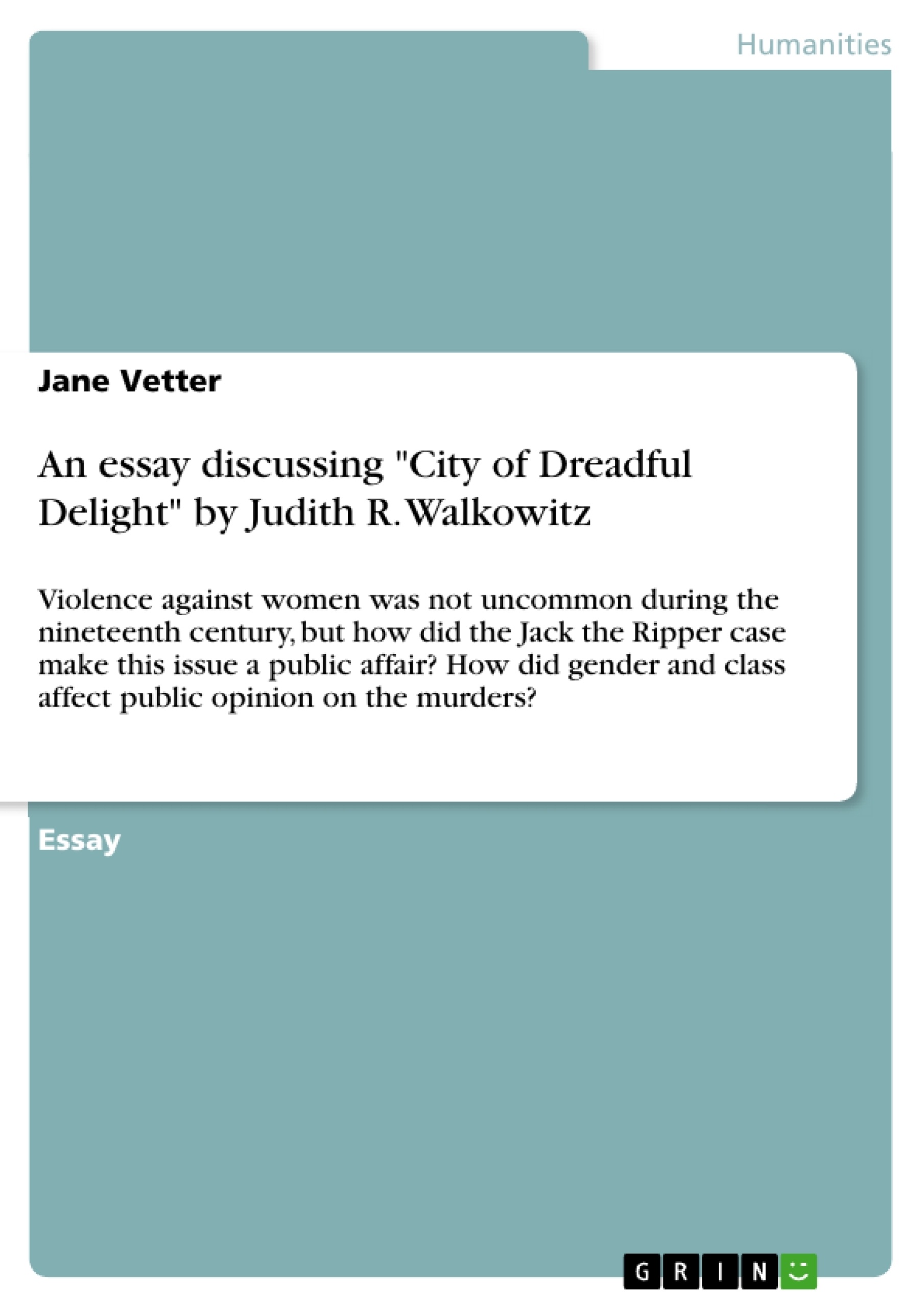In 1888, Great Britain was in the middle of the Victorian era and on the height of its international significance, mainly because of imperialistic strategies in order to abide British power by gaining resources from colonies. However, there were substantial depressions due to agricultural problems and foreign competition in regard to industrialization. Not only was the population growing rapidly but also the circulation of newspapers.
This novel media phenomenon led to a huge hype regarding the Jack the Ripper
murders, focusing on narratives, Victorian fantasies regarding gender and sex, and a mixture of actual facts and imaginary ideas.
Within ten weeks, five murders of prostitutes took place within Whitechapel, a
poor part of Eastern London. The press concentrated on various elements such as setting, mystery and motive of the homicides, possible suspects coming from different classes
and circumstances, and the lives of the victims, transforming the case “into a national
scandal” (201).
Inhaltsverzeichnis (Table of Contents)
- Violence against women was not uncommon during the nineteenth century, but how did the Jack the Ripper case make this issue a public affair? How did gender and class affect public opinion on the murders?
- In 1888, Great Britain was in the middle of the Victorian era and on the height of its international significance, mainly because of imperialistic strategies in order to abide British power by gaining resources from colonies.
- This novel media phenomenon led to a huge hype regarding the Jack the Ripper murders, focusing on narratives, Victorian fantasies regarding gender and sex, and a mixture of actual facts and imaginary ideas.
- Within ten weeks, five murders of prostitutes took place within Whitechapel, a poor part of Eastern London.
- Since the bottom of society was the target, violence against them \"was almost a charity\" in order to “relieve [them] of the penalty of existence\" (200).
- For women, the murders increased their feeling of vulnerability.
- Overall, the debate about Jack the Ripper was dominated by men and served their fantasies and ideas, marginalizing a woman's perspective.
- The comprehension of class, however, was illustrated more explicitly than gender.
- Upper classes were object to distrust as well since they were the ones who were actually able to gain knowledge regarding the human body and mutilate the way Jack the Ripper did.
- The poor from Whitechapel did not share the opinions of the rest of the classes since the victims came from their own area of living.
- Overall, the Jack the Ripper homicides provoked very different responses, dominated by male experts, \"those people in positions of power\" (226).
Zielsetzung und Themenschwerpunkte (Objectives and Key Themes)
This text examines the Jack the Ripper murders in London's Whitechapel district in 1888. It explores how the case became a national scandal and investigates the impact of gender and class on public perception of the murders. The main themes explored include:- The role of the media in shaping public opinion and creating a sensationalized narrative
- The intersection of gender, class, and violence in Victorian society
- The impact of the murders on women's sense of vulnerability and fear
- The influence of societal prejudices and stereotypes on the investigation and suspect pool
- The power dynamics between men and women and the ways in which these were reinforced by the case
Zusammenfassung der Kapitel (Chapter Summaries)
The text begins by introducing the context of violence against women in nineteenth-century Britain. It then explores how the Jack the Ripper case gained widespread notoriety, fueled by the burgeoning newspaper industry and sensationalized narratives. The text examines the setting of the murders, Whitechapel, and the social conditions that contributed to the events. It highlights how the murders exposed and exacerbated existing anxieties about class, poverty, and the perceived immorality of the lower classes. The text then analyzes the public's response to the murders, particularly the impact on women's lives and their sense of security. It explores how gendered power dynamics were further emphasized in the wake of the murders. The text also discusses the investigation and the variety of suspects, each reflecting different social perspectives and prejudices. It explores the role of class consciousness in framing the investigation, with suspicions falling on various social strata. The text concludes by highlighting the dominant role of male experts in shaping the public discourse around the murders, ultimately overshadowing alternative perspectives and reinforcing pre-existing power structures.Schlüsselwörter (Keywords)
The text focuses on the Jack the Ripper murders, examining themes of violence against women, gender dynamics, class consciousness, media sensationalism, Victorian society, Whitechapel, public perception, and the influence of societal prejudices and stereotypes.- Citar trabajo
- Jane Vetter (Autor), 2006, An essay discussing "City of Dreadful Delight" by Judith R. Walkowitz, Múnich, GRIN Verlag, https://www.grin.com/document/116468



